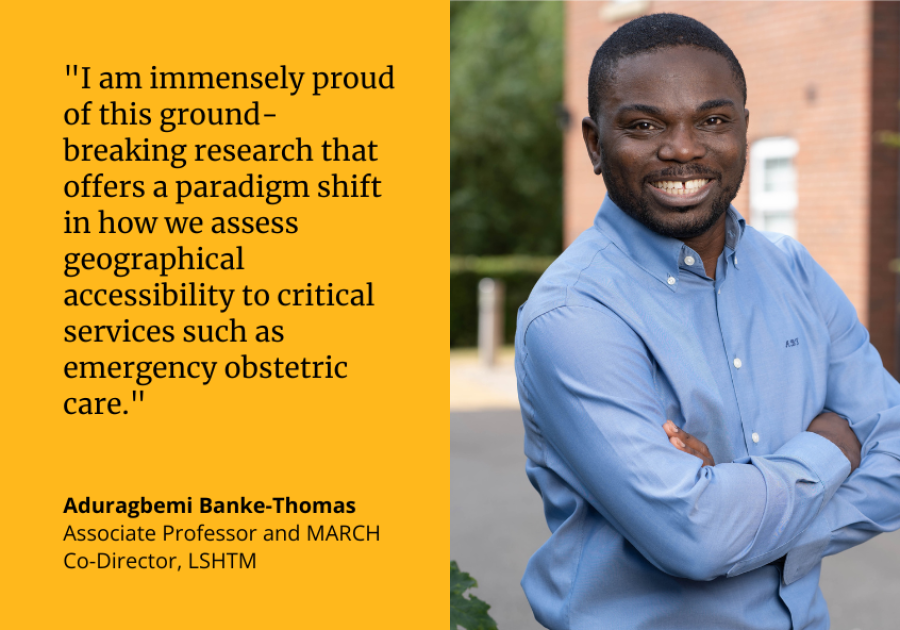
In a study led by researchers at the London School of Hygiene & Tropical Medicine (LSHTM) in collaboration with Google Health, geographical accessibility to emergency obstetric care facilities in the 15 most populated Nigerian cities was assessed. The study utilised a unique dataset of travel time data from Google Maps’ internal Directions API, that was jointly developed with Google Health. This study allowed for the element of choice by looking at travel time to the nearest, second nearest and third nearest functional public and private facilities across eight travel time scenarios, spanning peak and non-peak hours on weekdays and weekends.
The study, published in Lancet Global Health, found that women across 15 cities in Nigeria are within 45 minutes of the nearest public emergency obstetric care facility, although day of the week and time of day, as well as where facilities are located across cities, can significantly impact how long it takes women to get to the facility they need.
Women living in urban areas are thought to have an ‘urban advantage,’ with the idea that they have easier access to more emergency obstetric care facilities. However, in reality, women living in these areas often face complex challenges when travelling, such as poor road infrastructure and traffic congestion, leading to delays in accessing facilities and care. Understanding the barriers these women face could support better decisions in planning facilities and travel route provisions.
While most women could travel to an emergency obstetric care facility within 45 minutes, the distance a woman could travel varied with traffic congestion. The distance was generally lower during weekdays between 6:00pm and 8:00pm and highest during weekends between 1:00am and 3:00am.
Their analysis also showed that the choice of facility women could travel to was limited by time. In several cities, some women could not reach more than one emergency obstetric care facility within an hour, especially if they were limited to using only public facilities.
Similarly, facility distribution within individual cities also revealed inequalities. Some cities had an even distribution of facilities across the city, such as in Maiduguri, while others had clusters in the centre, for example in Kaduna. This study identified that informal settlements in particular, had the poorest accessibility to facilities, an important understanding as one third or Africa’s urban population currently live in informal settlements.
This analysis provides travel time data that more accurately reflects lived experiences in urban areas than previous studies that used models to assess travel times. The evidence generated shows not only where the inequalities in accessing facilities exist, but also when they are worse. This level of detail can provide accurate and realistic data to inform and better support service planning and has significant policy implications, such as supporting efforts for universal health coverage.
“I am immensely proud of this ground-breaking research that offers a paradigm shift in how we assess geographical accessibility to critical services such as emergency obstetric care. The more we can identify specific gap areas in geographical accessibility, the better positioned service planners and policymakers will be to target interventions. In future, layering these more realistic estimates of travel time on other spatially represented data will help refine evidence that informs benchmarks of travel time to care.”
The study was funded by Google through a grant awarded to Aduragbemi Banke-Thomas, who is Principal Investigator of the On Tackling In transit delays for Mothers in Emergency (OnTIME) Consortium.
LSHTM's short courses provide opportunities to study specialised topics across a broad range of public and global health fields. From AMR to vaccines, travel medicine to clinical trials, and modelling to malaria, refresh your skills and join one of our short courses today.
